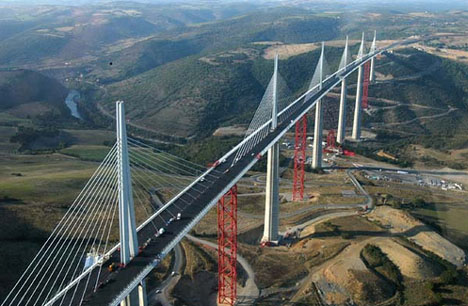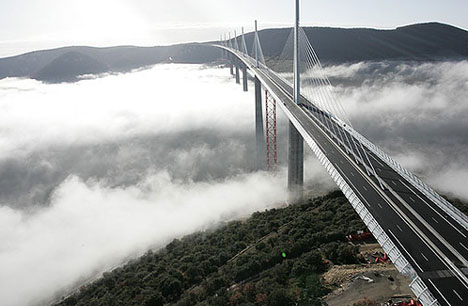
In one of the few places on Earth where people can rarely be found, the human race has well and truly made its mark. In the middle of the Pacific Ocean lies a floating garbage patch twice the size of Britain. A place where the water is filled with six times as much plastic as plankton. This plastic-plankton soup is entering the food chain and heading for your dinner table.
For hundreds of years, sailors and fisherman have known to avoid the area between the Equator and 50 degrees north latitude about halfway between California and Hawaii. As one of the ocean's deserts, the North Pacific Subtropical Gyre lacks the wind that sailors need to survive, as well as the nutrients to support large fish or the men who hunt them.
But 10 years ago, Captain Charles Moore took a short cut through the airless doldrums in his catamaran, Alguita, and caught sight of something that changed his life. As he looked out at what should have been a clear blue ocean, Moore saw a sea of plastic. As far as he could see, day after day, were bottles, wrappers and fragments of plastic in every colour.
Historically, the ocean's circular currents have led to accumulation of flotsam and jetsam in the subtropical high, where the waste has biodegraded with the help of marine micro-organisms. But since humans developed a material designed for durability, which can survive exposure to any bacteria, the gyre has been filling with a substance it can't get rid of. Rather than biodegrading, plastic photodegrades, breaking down in the sunlight into smaller and smaller pieces. But no matter how small it gets, it's still plastic, and causes havoc when it enters the stomachs of marine life.
Ian Kiernan, the Australian who founded Clean Up the World, started his environmental campaign 20 years ago after he became appalled by the amount of rubbish he saw on an around-the-world solo yacht race. He'll never forget the first time he saw the gyre.
"It was just filled with things like furniture, fridges, plastic containers, cigarette lighters, plastic bottles, light globes, televisions and fishing nets," Kiernan says.
"It's all so durable it floats. It's just a major problem."
He picks up an ashtray filled with worn-down coloured pieces of plastic. "This is the contents of a fleshy-footed shearwater's stomach," he says. "They go to the ocean to fish but there ain't no fish - there's plastic. They then regurgitate it down the necks of their fledglings and it kills them. After the birds decompose, the plastic gets washed back into the ocean where it can kill again. It's a form of ghost fishing, where it goes on and on."
With gyres in each of the oceans, connected by debris highways, the problem isn't restricted to the North Pacific Gyre. It is estimated there are more than 13,000 pieces of plastic litter on every square kilometre of the ocean surface.
The United Nations Environment Program says plastic is accountable for the deaths of more than a million seabirds and more than 100,000 marine mammals such as whales, dolphins and seals every year. A Dutch study in the North Sea of fulmar seabirds concluded 95 per cent of the birds had plastic in their stomachs. More than 1600 pieces were found in the stomach of one bird in Belgium.
Since his first encounter with the gyre in 1997, Moore has returned several times and created the Algalita Marine Research Foundation to study the problem. The Canadian filmmaker Ian Connacher joined Moore in 2005 and again last year to film the garbage patch for his documentary, I Am Plastic. After a week of sailing from Long Beach, California, Connacher was not prepared for what he saw.
"Charlie once found a mile-long trail of Taco Bell wrappers which had plastic in them. I didn't see anything like that, but that's not the point, because it's the little bits that are really making it a plastic soup," Connacher says.
"The most menacing part is those little bits of plastic start looking like food for certain animals, or the filter feeders don't have any choice, they just pick them up." Then there's the plastic that doesn't float. Greenpeace reports that about 70 per cent of the plastic that makes it to the ocean sinks to the bottom, where it can smother marine life. Greenpeace says Dutch scientists have found 600,000 tonnes of discarded plastic on the bottom of the North Sea alone.
A study by the Japanese geochemist Hideshige Takada and his colleagues at Tokyo University in 2001 found that plastic polymers act like a sponge for resilient poisons such as DDT and polychlorinated biphenyls. Takada's team found non-water-soluble toxic chemicals can be found in plastic in levels as high as a million times their concentration in water.
As small pieces of plastic are mistaken for fish eggs and other food by marine life, these toxins enter the food chain. Even without this extra toxic load, eating plastic can be hazardous to the health.
In 2002 a study of hermaphrodite fish led Canadian scientists to link oestrogen in water to abnormal sex organs in fish. Several plastic additives have been found to mimic oestrogen. Some experts, such as Frederick vom Saal, a professor of biological sciences at Missouri University, say declining fertility rates in humans could be linked to exposure to synthetic oestrogen in plastics.
Some of the ocean's plastic arrives over the side of a ship as litter, and some is the result of containers falling into the ocean. But Greenpeace says about 80 per cent of plastic found at sea is washed out from the land.
The journal Science last year predicted seafood stocks would collapse by 2048 if overfishing and pollution continued.
Greenpeace says embracing the three Rs - reduce, re-use and recycle - would help tackle the problem. Plastic recycling is lagging well behind paper and cardboard, as people are confused about what recycling is available in their areas. There are other challenges for plastic recycling, such as the fact that it can release toxic chemicals into the atmosphere, and that it is more expensive to recycle some plastic than to create a new product from petrochemicals.
The use of bioplastics could help reduce the amount with which we are coating the planet. Traditional petrochemical-based plastics are non-degradable and non-renewable; degradable plastic breaks into smaller pieces in UV light but remains plastic; and there are two kinds of biodegradable plastic that break down in compost - one from a petrochemical resource, the other from a renewable resource such as corn or wheat, which is known as bioplastic.
Dr Katherine Dean, of the CSIRO, says corporate firms have become interested in bioplastic over the past three years.
"When oil prices soared in 2005, that changed a lot of people's perspective, because bioplastic became quite cost-competitive," she says. "All of a sudden it wasn't just about doing the right thing."
In 2001 CSIRO researchers were involved in the development of a corn-based bioplastic that would provide the foundation for the company Plantic Technologies, which developed biodegradable plastic for everything from food and beverage packaging to medical, agricultural and sporting applications.
The chief executive of Plantic, Grant Dow, says once composted, the plastic would become nothing more than carbon dioxide and water.
"For all intents and purposes, it looks like plastic and feels like plastic and does the same thing as plastic in the application," he says.
"It will only biodegrade in the presence of heat, moisture and bacteria, so it will sit in your cupboard pretty much indefinitely, but when the bacteria get to it in compost, that's it. It's gone."
While researchers continue to develop bioplastics, there's no doubt the new generation of polymers can make a difference in day-to-day living. Already supermarkets in Britain, such as Marks & Spencer, Sainsbury's and Tesco, have introduced bioplastic packaging, and food companies are embracing the concept.
Connacher believes as consumers learn more about the situation, many will respond positively. "We think products are going to be recycled, but they're not. We have become irresponsible with the way we use a lot of things, particularly disposable products."




















































 There is another sequoia species (not to be confused with Giant Sequoia) that is quite remarkable: the
There is another sequoia species (not to be confused with Giant Sequoia) that is quite remarkable: the 




























